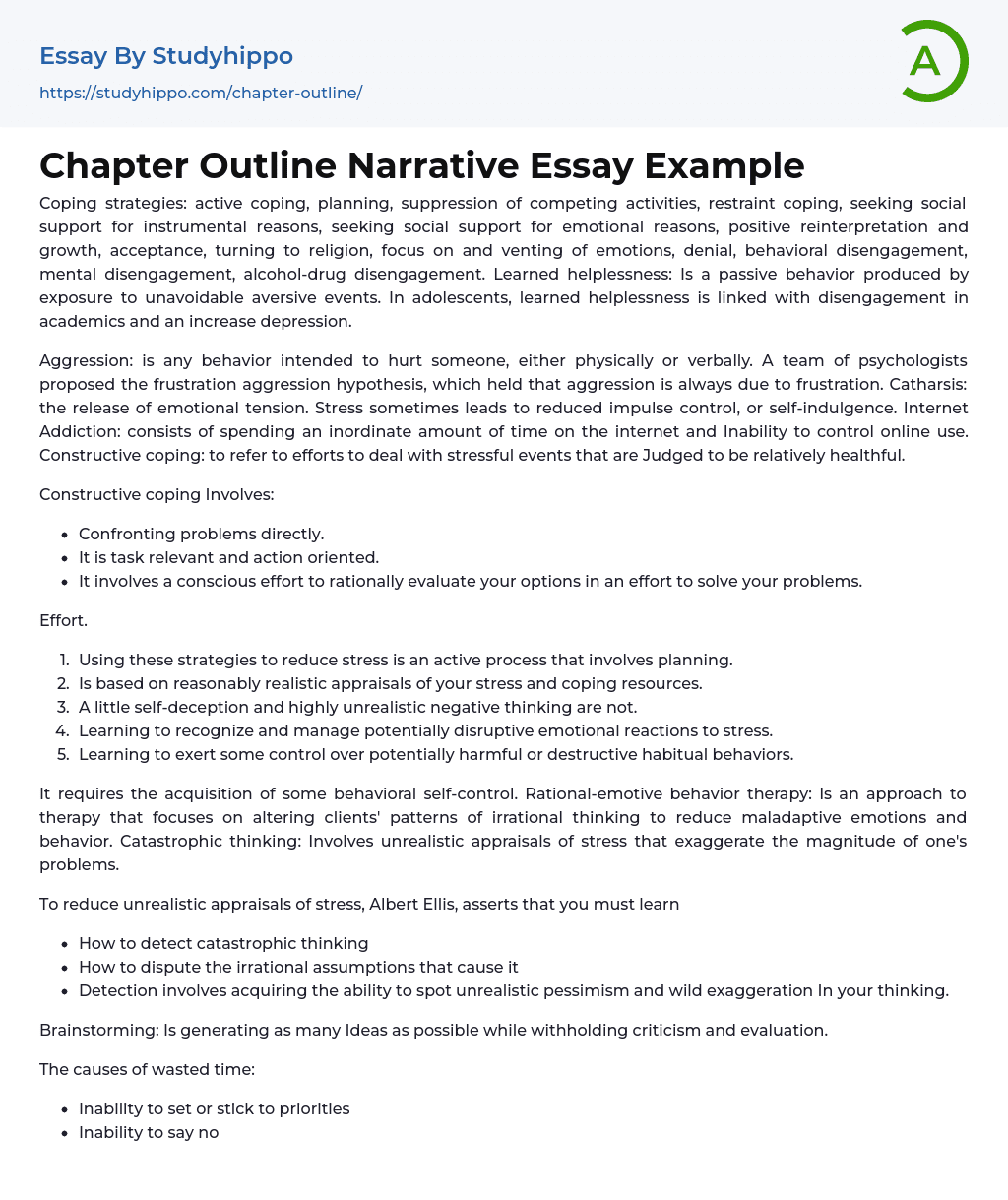The coping strategies include active coping, planning, suppression of competing activities, restraint coping, seeking social support for instrumental reasons and emotional reasons, positive reinterpretation and growth, acceptance, turning to religion, focus on and venting of emotions, denial, behavioral disengagement, mental disengagement and alcohol-drug disengagement. Passive behavior resulting from exposure to unavoidable aversive events leads to learned helplessness. In adolescents, learned helplessness can cause academic disengagement and heightened depression.
Aggression refers to any behavior that aims to harm someone either physically or verbally. According to the frustration aggression hypothesis proposed by a team of psychologists, aggression is always caused by frustration. Catharsis involves releasing emotional tension, while stress can result in reduced impulse control or excessive self-indulgence. Internet Addiction is characterized by spending excessive time online and an inability to control online usa
...ge. Constructive coping refers to attempts to manage stressful situations in a healthy manner.
Constructive coping Involves:
- Confronting problems directly.
- It is task relevant and action oriented.
- It involves a conscious effort to rationally evaluate your options in an effort to solve your problems.
Exertion.
- Using these strategies to reduce stress is an active process that involves planning.
- Is based on reasonably realistic appraisals of your stress and coping resources.
- A little self-deception and highly unrealistic negative thinking are not.
- Learning to recognize and manage potentially disruptive emotional reactions to stress.
- Learning to exert some control over potentially harmful or destructive habitual behaviors.
To improve mental and emotional well-being, one must possess the ability to control their
behavior. Rational-emotive behavior therapy aims to modify clients' irrational thinking patterns in order to reduce maladaptive emotions and behavior. Catastrophic thinking, on the other hand, involves unrealistic evaluations of stressful situations that overemphasize the size of one's problems.
Albert Ellis claims that in order to decrease impractical evaluations of stress, one must gain knowledge.
- How to detect catastrophic thinking
- How to dispute the irrational assumptions that cause it
- Detection involves acquiring the ability to spot unrealistic pessimism and wild exaggeration In your thinking.
Brainstorming involves creating a large quantity of ideas without criticism or evaluation.
The reasons behind wasted time:
- Inability to set or stick to priorities
- Inability to say no
- Inability to delegate responsibility t Off
- Inability to accept anything less than perfection
Individuals who prioritize present events over future goals and their consequences are more likely to engage in procrastination, which involves delaying tasks until the last minute.
The ability to identify and express emotions, use them to improve thinking, understand and evaluate emotional states, as well as regulate one's own emotional reactions are all part of the idea of emotional intelligence.
The inclusion of four key components is essential for emotional intelligence:
- People need to be able to accurately perceive emotions in themselves and in others and to have the ability to express their own emotions effectively.
- People need to be aware of how their emotions shape their thinking, decision making, and coping with stress.
- People need to be able to understand
and analyze their emotions, which may often be complex and contradictory.
- A quiet environment
- A mental device
- A passive attitude
- A comfortable position
- Death system: the collection of rituals and procedures used by a culture to handle death.
- Death anxiety: is the fear and apprehension about one's own death.
- Bereavement: the painful loss of a loved one through death.
- Mourning: refers to the formal practices of an individual and a community in response to a death.
- According to Keeper's model, people evolve through a series of five stages as they confront their own death:
Stage 1:
Stage 2:
Stage 3:
Stage 4:
Stage 5:
Having settled all outstanding issues is the key to gaining approval.
Stage 1: Numbness.
Experiencing physical symptoms like chest or throat tightness and nausea is a typical occurrence after the passing of a loved one, especially if it was sudden. These symptoms may last for several days or even weeks.
Yearning is the second stage.
At this location, individuals who have survived attempt to regain a missing individual.
Stage 3: Disorientation and despair.
- Adult essays
- Aggression essays
- Altruism essays
- Archetype essays
- Behavior essays
- Certainty essays
- Conformity essays
- Deception essays
- Human Behavior essays
- Human Sexuality essays
- Maturity essays
- Morality essays
- Obedience essays
- Procrastination essays
- Reinforcement essays
- Role Model essays
- Ambition essays
- Anger essays
- Betrayal essays
- Boredom essays
- Confidence essays
- Courage essays
- Desire essays
- Disgrace essays
- Doubt essays
- Empathy essays
- Fairness essays
- Fear essays
- Feeling essays
- Forgiveness essays
- Grief essays
- Guilt essays
- Happiness essays
- Harmony essays
- Hate essays
- Honesty essays
- Honor essays
- Hope essays
- Humanity essays
- Inspiration essays
- Kindness essays
- Laughter essays
- Loneliness essays
- Lost essays
- Loyalty essays
- Need essays
- Passion essays
- Pressure essays
- Pride essays
- Regret essays




